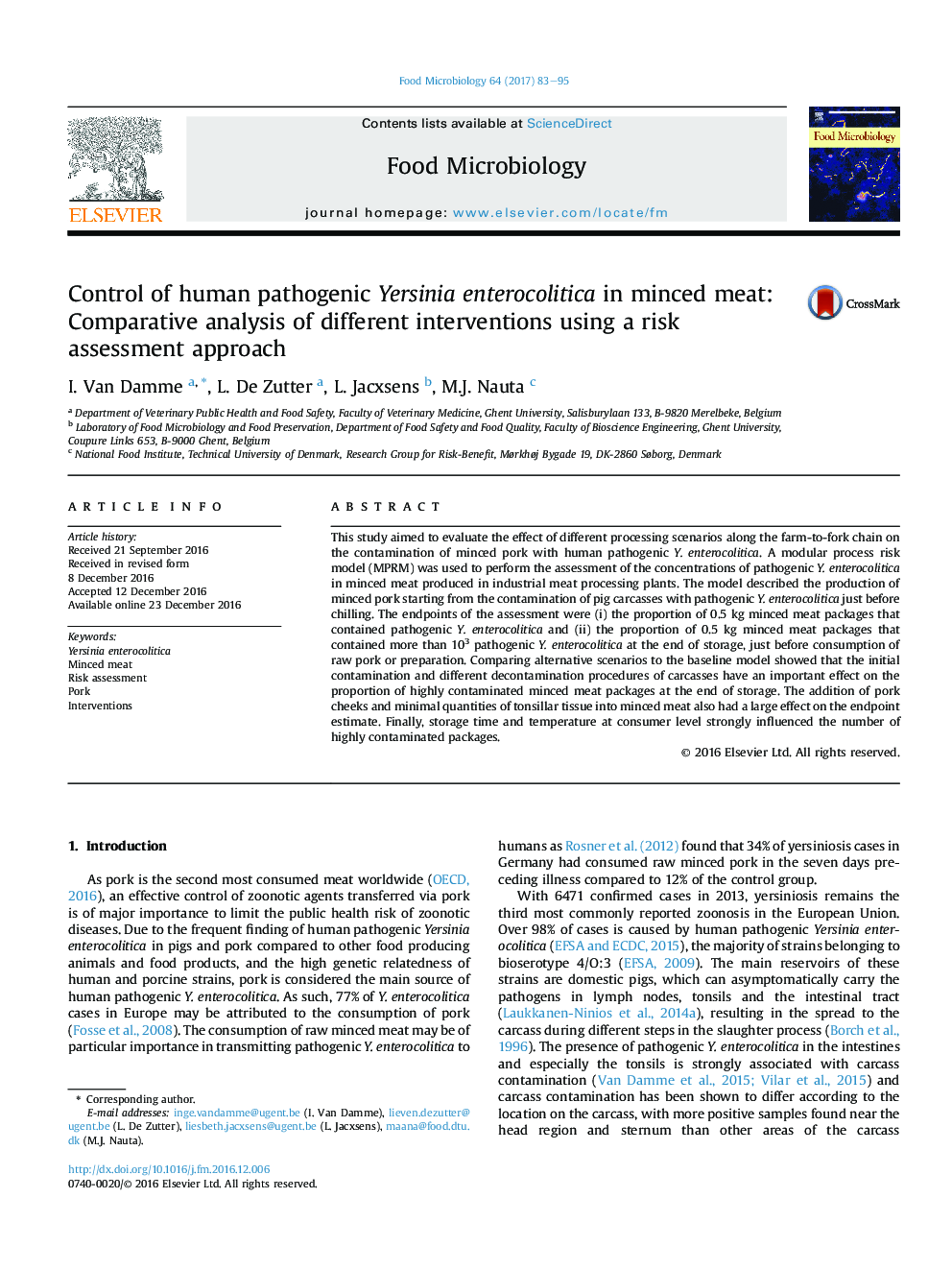| Article ID | Journal | Published Year | Pages | File Type |
|---|---|---|---|---|
| 5740212 | Food Microbiology | 2017 | 13 Pages |
â¢Contamination of minced meat with human pathogenic Y. enterocolitica was modelled.â¢The endpoint of the assessment was the proportion of (highly) contaminated packages.â¢Control of Y. enterocolitica contamination at slaughterhouse level is important.â¢Pork bellies are preferred over head meat for the production of minced meat.â¢Consumer practices strongly influence the number of highly contaminated packages.
This study aimed to evaluate the effect of different processing scenarios along the farm-to-fork chain on the contamination of minced pork with human pathogenic Y. enterocolitica. A modular process risk model (MPRM) was used to perform the assessment of the concentrations of pathogenic Y. enterocolitica in minced meat produced in industrial meat processing plants. The model described the production of minced pork starting from the contamination of pig carcasses with pathogenic Y. enterocolitica just before chilling. The endpoints of the assessment were (i) the proportion of 0.5 kg minced meat packages that contained pathogenic Y. enterocolitica and (ii) the proportion of 0.5 kg minced meat packages that contained more than 10³ pathogenic Y. enterocolitica at the end of storage, just before consumption of raw pork or preparation. Comparing alternative scenarios to the baseline model showed that the initial contamination and different decontamination procedures of carcasses have an important effect on the proportion of highly contaminated minced meat packages at the end of storage. The addition of pork cheeks and minimal quantities of tonsillar tissue into minced meat also had a large effect on the endpoint estimate. Finally, storage time and temperature at consumer level strongly influenced the number of highly contaminated packages.
